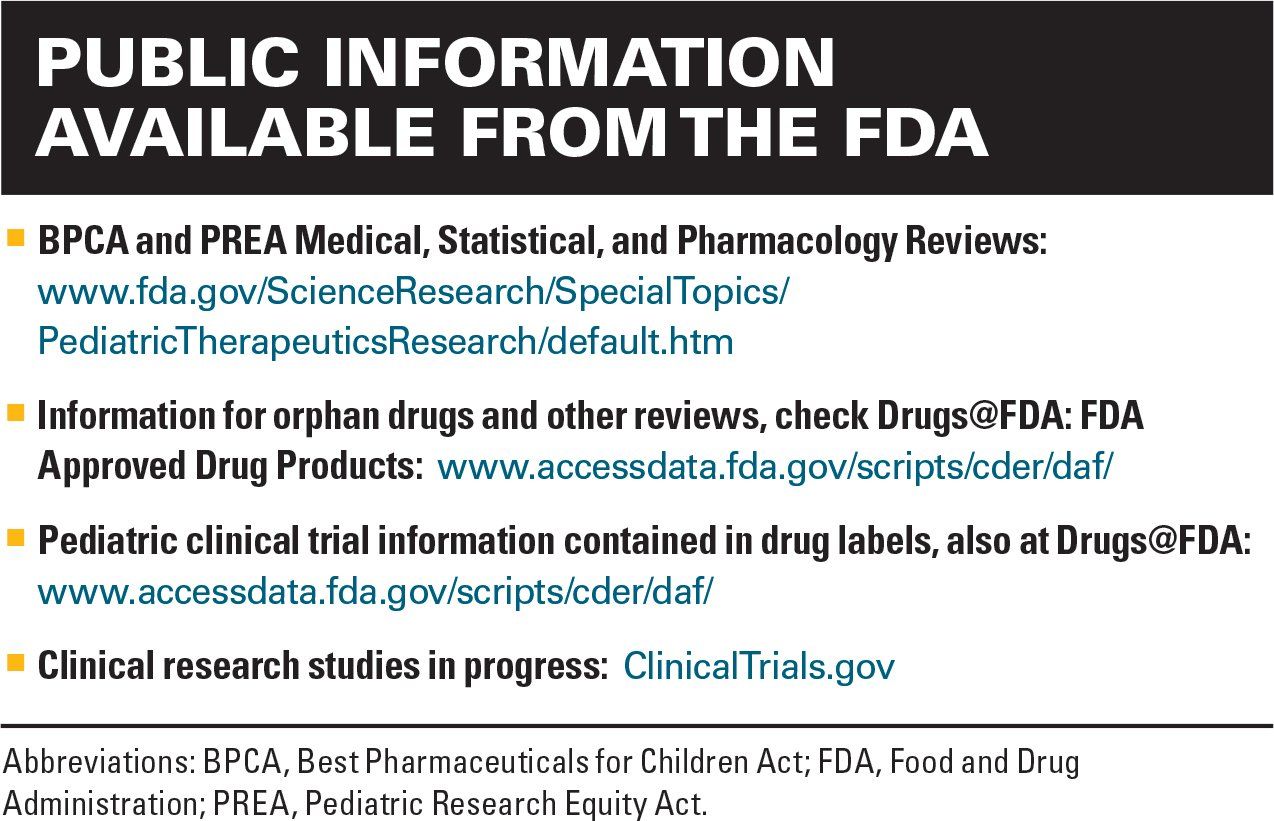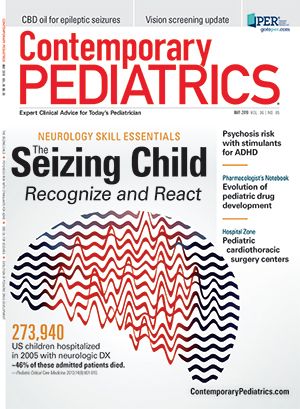Evolution of pediatric drug development
Pediatric drug development has made exceptional strides in the last 10 years. The outlook going forward is remarkably positive, but new pressures to expedite the process are emerging.
Public information available from the FDA

Note from Dr Lee

In 2019, we tend to take the inclusion of pediatric patients in a drug development program for granted. In fact, pediatric drug development is a new science that has just evolved in the last 20 years. The struggle to make pediatrics part of this multibillion-dollar industry is not only interesting, but it is also informative with regard to continuing pressures to expedite the pediatric component of the drug development process.
This pediatric drug development process affects every pharmacy and medical practitioner working with pediatric patients every day. Everything from the inclusion of a drug on the formulary, to drug shortages, to insurance coverage for a drug is affected by the information that was generated during the drug development process. This is very much in contrast to the situation before 1997, when drugs were routinely used for pediatric patients off label, and therefore the assumption always was that information about the use of a new drug in pediatric patients would not be available. Eventually there would be information in the literature or in the pediatric dosing handbooks about pediatric use, but the basis of that information was always either small numbers of pediatric patients or unknown.
The situation today is very different, when the numbers of off-label pediatric uses of medication are getting less and less, and the basis for the labeled pediatric dose and indication is available publicly. However, pediatric drug development continues to evolve, and pediatric practitioners should be aware of the basis on which pediatric doses and indications are given in US Food and Drug Administration (FDA) labels.
History of pediatric drug development
The major flaw in the drug development system that excluded pediatric patients was brought into the light in 1963, when Dr. Harry C. Shirkey pointed out that, “By an odd and unfortunate twist of fate, infants and children are becoming therapeutic or pharmaceutical orphans.”1 This fact was particularly frustrating because the Kefauver-Harris Amendments (1962) to the Federal Food, Drug, and Cosmetic Act of 1938, establishing the need for efficacy in drug development, were in part the result of the thalidomide tragedy causing phocomelia in children. Shirkey, who was a pharmacist at a children’s hospital in Cincinnati, Ohio, went to medical school and took pediatric drug use as his career direction. He later became the chair of the American Academy of Pediatrics (AAP) Committee on Drugs.
The advancement of pediatric drug development actually required 2 separate but mutually supportive programs. One was the scientific understanding of drug disposition in pediatric patients, and the other was the regulatory preparation that was necessary for the eventual legislation that resulted in the laws that we have today.
The scientific endeavor was led by Sumner J. Yaffe, MD, who was a Harvard-trained physician. Yaffe was the program director of the Clinical Research Center for Premature Infants at Stanford University, Stanford, California, but was enticed to establish a clinical pharmacology center at Buffalo Children’s Hospital, Buffalo, New York, in the late 1960s. In Buffalo, Yaffe found the leaders in the scientific movement that was to become the science of clinical pharmacokinetics. Doctors Gerhard Levy, Milo Gibaldi, and William Jusko were leading an innovative movement to understand drug disposition using computational science, and Yaffe established close collaboration with this group. This collaboration is reflected in their early publications in the 1970s with Levy2,3 and Jusko.4-6 The use of pharmacokinetics in pediatric pharmacology was firmly established by Yaffe in his research through the 1980s and 1990s, and is the foundation of pediatric clinical pharmacology today. Yaffe has subsequently been known as the “Father of Pediatric Clinical Pharmacology.”
The regulatory preparation for the laws governing pediatric drug development first occurred in the 1970s. Initially, investigators had assumed that it was unethical to include children in drug development research. In 1974, the AAP published a report commissioned by the FDA titled “General Guidelines for the Evaluation of Drugs to be Approved for Use During Pregnancy and for Treatment of Infants and Children.” Based on this document, the FDA released a Guidance for Industry in September 1977 on the “General Considerations for the Clinical Evaluation of Drugs in Infants and Children.” The FDA also created a regulation in 1979 establishing a “Pediatric Use” subsection of the label, so the stage was set for the inclusion of pediatric patients in drug development. However, drug development studies were rarely conducted in spite of this regulatory preparation.
In 1997, Congress included an incentive section for conducting pediatric drug development studies in the FDA Modernization Act. The incentive provided an additional 6 months of patent exclusivity if the sponsor conducted the pediatric studies that the FDA requested. The incentive proved to be popular and was renewed at the end of the 5-year sunset as the Best Pharmaceuticals for Children Act (BPCA) of 2002. In that same period, a former “pediatric rule” of the FDA was enacted in 2003 as the Pediatric Research Equity Act (PREA), stating that if the sponsor was developing the drug for an indication that also occurred in children, then the sponsor must also study pediatric patients. Therefore, BPCA and PREA could work together as the “carrot and the stick” to ensure that pediatric patients were included in most drug development programs.
Because BPCA and PREA had a 5-year sunset, they were both renewed in 2007 under the FDA Amendments Act, and finally made permanent in 2012 under the FDA Safety and Innovation Act.
Science behind pediatric drug development
As might be expected in any new science, multiple mistakes were made originally in designing pediatric drug development trials. For example, the FDA review division would ask for a pediatric study that, when conducted by the sponsor, was found to be insufficient for pediatric labeling. In other cases, the dose of the drug was incorrect. In all, 42% of the BPCA studies conducted in the 1998-2012 period failed to get any pediatric labeling.7 This was a remarkable statistic in that all these drugs had proven to be effective in adults, and there was an ethical concern because no benefit was being derived from these failed studies for the protected pediatric patient population.
Another analysis of the “failed” (failed to label) trials suggested that dosing, the placebo effect in pediatric patients, differences in the disease process between pediatric patients and adults, and study design were major problems in these studies.8 The dosing problem in pediatric drug development has been addressed in a number of ways. Using dose ranging during drug development in pediatric patients, an increased use of modeling and simulation techniques, and combined adolescent and adult trials all have improved pediatric dosing during drug development. For the placebo effect, one approach has been to use a double randomization that eliminates placebo responders, and this method has been effective in trials for migraine headache.
The trial design issues have been addressed through studies of the use of enrichment in pediatric trails and an examination of endpoints in pediatric drug development trials. Enrichment is the process of selecting a patient population that is most appropriate for the trial, and includes practical, prognostic, and predictive factors.9 An assessment of the use of enrichment in pediatric drug development trials demonstrated that the use of all 3 types of enrichment criteria led to labeling success in almost 90% of trials, whereas the use of no enrichment criteria was associated with only a 65% success rate.10
An examination of the endpoints used in pediatric drug development trials was similarly enlightening. The use of the same endpoint in the adult trial as in the pediatric trial was significantly more successful than when a different endpoint had to be used in the pediatric trial.11 Endpoints that were subjective or those that were objective have similar success rates. A separate evaluation was performed for surrogate endpoints.12
Where to find information
Most of the FDA-authored reviews of pediatric drug development programs are available publicly. For information on accessing these reviews, see “Public information available from the FDA.”
Summary
Pediatric drug development has made exceptional strides in the last 10 years. Failure rates in pediatric trials that exceeded 40% are now at about 20%. The outlook is remarkably positive,13 but new pressures are emerging. Questions about the appropriate use of the extrapolation of efficacy from adults to pediatric patients are still unanswered, as are questions regarding the use of modeling and simulation to decrease or eliminate pediatric clinical trials.
The failure rate for pediatric studies should be 10% or less, given our increased understanding of pediatric diseases and pediatric drug development. However, history has shown that pediatric practitioners are resilient and dedicated, and going forward these questions will be answered to the benefit of pediatric patients.
References:
1. Shirkey H. Therapeutic orphans. Pediatrics. 1999;104(3 pt 2):583-584.
2. Levy G, Mosovich LL, Allen JE, Yaffe SJ. Biliary excretion of riboflavin in man. J Pharm Sci. 1972;61(1):143-144.
3. Levy G, Yaffe SJ. Clinical implications of salicylate-induced liver damage. Am J Dis Child. 1975;129(12):1385-1386.
4. Jusko WJ, Baliah T, Kim KH, Gerbracht LM, Yaffe SJ. Pharmacokinetics of gentamicin during peritoneal dialysis in children. Kidney Int. 1976;9(5):430-438.
5. Jusko WJ, Mosovich LL, Gerbracht LM, Mattar ME, Yaffe SJ. Enhanced renal excretion of dicloxacillin in patients with cystic fibrosis. Pediatrics. 1975;56(6):1038-1044.
6. Yaffe SJ, Gerbracht LM, Mosovich LL, Mattar ME, Danish M, Jusko WJ. Pharmacokinetics of methicillin in patients with cystic fibrosis. J Infect Dis. 1977;135(5):828-831.
7. Wharton GT, Murphy MD, Avant D, et al. Impact of pediatric exclusivity on drug labeling and demonstrations of efficacy. Pediatrics. 2014;134(2):e512-e518.
8. Momper JD, Mulugeta Y, Burckart GJ. Failed pediatric drug development trials. Clin Pharmacol Ther. 2015;98(3):245-251.
9. US Department of Health and Human Services, Food and Drug Administration, Center for Drug Evaluation and Research (CDER), et al. Guidance for Industry: Enrichment Strategies for Clinical Trials to Support Approval of Human Drugs and Biological Products. Available at: https://www.fda.gov/downloads/drugs/guidancecomplianceregulatoryinformation/guidances/ucm332181.pdf. Published December 2012. Accessed March 12, 2019.
10. Green DJ, Liu XI, Hua T, et al. Enrichment strategies in pediatric drug development: an analysis of trials submitted to the US Food and Drug Administration. Clin Pharmacol Ther. 2018;104(5):983-988.
11. Green DJ, Burnham JM, Schuette P, et al. Primary endpoints in pediatric efficacy trials submitted to the US FDA. J Clin Pharmacol. 2018;58(7):885-890.
12. Green DJ, Sun H, Burnham J, et al. Surrogate endpoints in pediatric studies submitted to the US FDA. Clin Pharmacol Ther. 2019;105(3):555-557.
13. Green DJ, Zineh I, Burckart GJ. Pediatric drug development: outlook for science-based innovation. Clin Pharmacol Ther. 2018;103(3):376-378.
